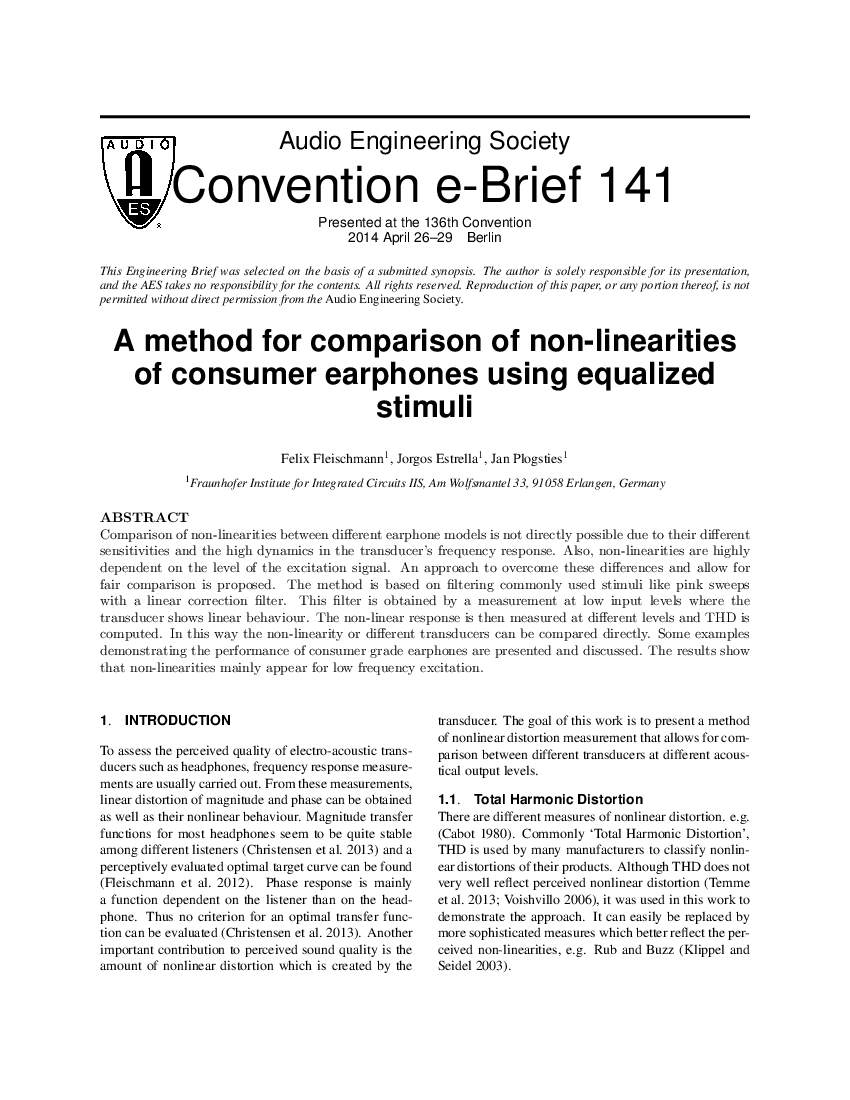Home / Publications / E-library page
You are currently logged in as an
Institutional Subscriber.
If you would like to logout,
please click on the button below.
Home / Publications / E-library page
Only AES members and Institutional Journal Subscribers can download
Comparison of nonlinearities between different earphone models is not directly possible due to their different sensitivities and the high dynamics in the transducer`s frequency response. Also, nonlinearities are highly dependent on the level of the excitation signal. An approach to overcome these differences and allow for fair comparison is proposed. The method is based on filtering commonly used stimuli like pink sweeps with a linear correction filter. This filter is obtained by a measurement at low input levels where the transducer shows linear behavior. The nonlinear response is then measured at different levels and THD is computed. In this way the non-linearity or different transducers can be compared directly. Some examples demonstrating the performance of consumer grade earphones are presented and discussed. The results show that nonlinearities mainly appear for low frequency excitation.
Author (s): Fleischmann, Felix; Estrella, Jorgos; Plogsties, Jan
Affiliation:
Fraunhofer Institute for Integrated Circuits IIS, Erlangen, Germany
(See document for exact affiliation information.)
AES Convention: 136
Paper Number:141
Publication Date:
2014-04-06
Import into BibTeX
Permalink: https://aes2.org/publications/elibrary-page/?id=17150
(374KB)
Click to purchase paper as a non-member or login as an AES member. If your company or school subscribes to the E-Library then switch to the institutional version. If you are not an AES member Join the AES. If you need to check your member status, login to the Member Portal.

Fleischmann, Felix; Estrella, Jorgos; Plogsties, Jan; 2014; A Method for Comparison of Nonlinearities of Consumer Earphones Using Equalized Stimuli [PDF]; Fraunhofer Institute for Integrated Circuits IIS, Erlangen, Germany; Paper 141; Available from: https://aes2.org/publications/elibrary-page/?id=17150
Fleischmann, Felix; Estrella, Jorgos; Plogsties, Jan; A Method for Comparison of Nonlinearities of Consumer Earphones Using Equalized Stimuli [PDF]; Fraunhofer Institute for Integrated Circuits IIS, Erlangen, Germany; Paper 141; 2014 Available: https://aes2.org/publications/elibrary-page/?id=17150